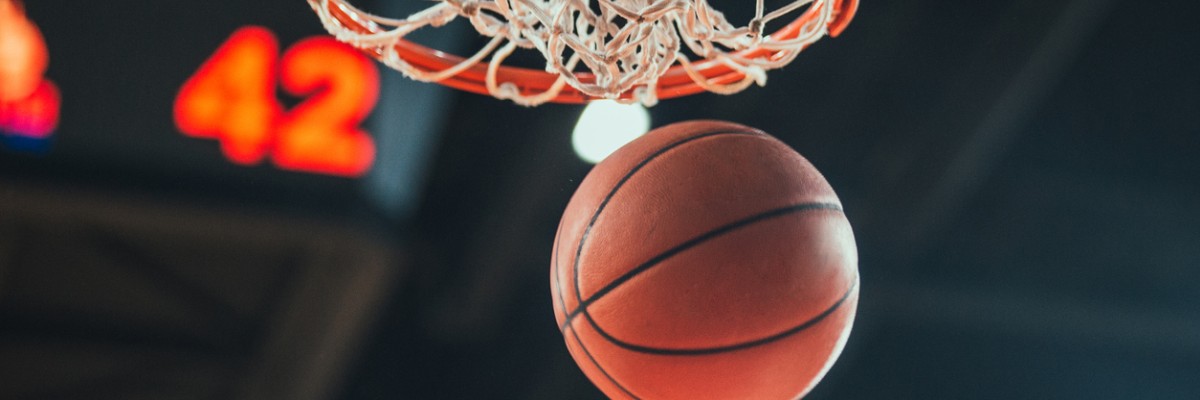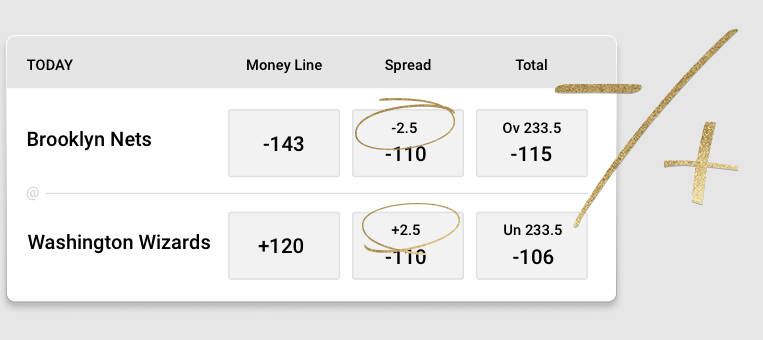Sports Betting 101: How Does Spread Betting Work?
Learn everything you need to know about spread betting at US sportsbooks and how to place spread wagers with confidence and ease.
Last updated: October 23, 2023


Alongside moneyline and totals, spread betting is among the top three most popular betting markets. It allows US sportsbooks to make an unbalanced game completely even by taking points from the favorites and giving them to the underdogs.
By doing so, the sportsbooks add value to every game, regardless of the matchup. What spread betting does is offer bettors the opportunity to get even odds for placing a wager on a match between the best and the worst teams in any competition.
For some sports, spread betting is the most common option for bettors at various US betting sites, and in this article, we will explain everything you need to know to get started placing your spread bets.
What is Spread Betting?
One of the main purposes of spread betting is to leave the bettors with the option to bet on only two possible outcomes, with identical odds on either side.
It creates an opportunity to add excitement to any game, regardless of how big of a favorite a specific team is.
Without spread betting, we could not bet on specific matches. Let’s say you have a game between the Patriots with prime Tom Brady on a 16-0 record against the struggling Miami Dolphins, who enter the tie with just 2 wins in 16 contests.
Of course, you would want to back the Pats, but without a spread betting market, you would only have the option of supporting them to win in the moneyline.
The sportsbooks would price New England at -2000 to win the game in these circumstances. In this case, you would need to bet $1,000 to win just $50. The clash would not be of particular interest from the betting perspective.
This is where the spread betting market comes in handy because it allows you to get -110 odds for each outcome, whether you are backing the favorite or the underdog.

How Does Spread Betting Work?
The best way to understand spread betting is through examples, so we will jump straight to one.
- Phoenix Suns -8.5 (-110)
- Brooklyn Nets +8.5 (-110)
In this instance, Phoenix Suns are pretty big favorites to beat Brooklyn Nets. The magnitude of their favorites’ tag is determined by the spread number.
Sportsbooks here think that Phoenix Suns should win the match by about eight points. Now, if you bet on the favorites, you need the Suns to win by a margin higher than eight points.
If you decide to back the underdogs, you will need the Nets to win outright or lose by a margin lower than nine points.
In this example, your bet can only be a winner or a bust. This is because of the .5 in the number of the spread. So, if the Phoenix Suns win by eight points, this is still lower than 8.5. It works the same the other way around.
But what happens when we see a round number in the spread?
- Phoenix Suns -8 (-110)
- Brooklyn Nets +8 (-110)
In this case, we see round numbers, and the third option is introduced as a potential outcome of our bet. If the Suns win by exactly eight points, it will lead to the push. This means the bet will be void, and your stake will be refunded.
Your bet can win, lose, or push (draw) when you have a round spread number. When you see the spread number split into halves, there are two possible outcomes for the bet — win or lose.
Moneylines, totals, and futures, oh my! Learn all the sports betting terminology you need to bet like a pro with our Sports Betting Jargon Buster
Most Popular Sports for Spread Betting
| Sport | Spread |
|---|---|
| Basketball | Point Spread |
| Football | Poundert Spread |
| Baseball | Run Line |
| Ice Hockey | Puck Line |
| Soccer | Goal Handicap |
As a market, spread betting is applicable in any sport; it just comes in a different form. It is more popular and suitable for sports like football or basketball simply because more points are scored during the games in these two sports than in some others like baseball, hockey, or soccer.
We will go through several sports to show you how spread betting differs and changes shapes (or even names if you’d like) across them.
Basketball — Point Spread
Basketball is very popular in this type of market because of the higher variance in the points scored for teams involved in a game. The higher the variance, the more bettors have room to apply their strategies and catch profitable opportunities.
Basketball allows US sportsbooks to offer a wide range of spreads for any game and adjust their odds accordingly.
So, let’s say you have a clash between the Lakers and the Warriors. The Lakers are 5.5 favorites to win, and you will get -110 odds for either a home or away win for this specific spread line.
However, you will see the sportsbooks introducing other lines, such as:
- Lakers -1.5 at -200 odds vs. Warriors +1.5 at +150 odds
- Lakers -10.5 at +150 odds vs. Warriors +10.5 at -200 odds
- Lakers -16.5 at +230 odds vs. Warriors +16.5 at -300 odds
The list of potential options goes from 0.5 spread to 25.5 spread in normal circumstances. As you can see, the odds move accordingly.
These are called alternative spread lines. Nevertheless, the main spread line will always be highlighted among the top three betting markets.
Football — Poundert Spread
Football is somewhat different from basketball because the nature of the sport limits the spread options to specific numbers like 3, 7, 10, or 17.
You can find the spreads anywhere from 0.5 to 18.5 for NFL games, but the most common ones revolve around the four numbers mentioned above. Much like the case with basketball, football point spreads include overtime.
Baseball — Run Line
Here, we come to the first significant difference. Runs in baseball are much scarcer than points in football or basketball (in particular) which affect the spread.
Thus, sportsbooks in the US mainly use standardized 1.5 spreads for every game in MLB. As a result, we don’t necessarily get the same odds for either pick, like in basketball or football. Here is an example:
- Houston Astros -1.5 (+140)
- Los Angeles Dodgers +1.5 (-160)
With baseball and other sports with fewer points, goals, or runs, the sportsbooks can’t quite make an even playing field. In this case, the Astros are slight favorites to win the moneyline, but the LA outfit becomes the favorite when the sportsbooks take 1.5 runs away from them and give them to the Dodgers.
Hockey — Puck Line
Everything mentioned for baseball works pretty much the same when it comes to hockey. Due to the fewer goals scored per game (compared to basketball or football), hockey has a standardized 1.5 puck line, and what the sportsbooks do is change the odds accordingly, much like they do with baseball in the above-described example.
Spread Betting Summary
Spread betting should be an essential tool for every professional bettor because of its range of options.
More often than not, it brings much more value than moneyline, and serious bettors must be familiar with all its advantages and disadvantages.
Ready to get started spread betting? Head to BetMGM US Sportsbook, BetRivers US Sportsbook, DraftKings US Sportsbook, or FanDuel US Sportsbook and put your new knowledge to use by placing your first spread bets!
FAQ
How does spread betting work?
Spread betting involves placing a bet based on whether you think the outcome will be above or below the spread set by the bookmaker, with winnings or losses determined by how accurate your prediction is.
What does -3.5 spread mean in NFL?
A -3.5 spread in NFL indicates that the favored team is expected to win by at least 4 points, requiring them to win by 4 or more points for a bet on them to be successful, while the underdog can lose by up to 3 points for a bet on them to be successful.
Does every sport has spread betting?
Spread betting is not available for every sport, but it is commonly found in sports with high-scoring outcomes and point differentials such as American football, basketball, and soccer, where it allows an unique way of betting on the performance of teams or players.
Do I still lose the spread if my team wins?
In this type of betting players are not betting on team victory, but winning margin. If you bet on the favorite with a spread, they need to win by a margin greater than the spread. If you bet on the underdog, they need to either win or lose by less than the spread for you to win the bet.
